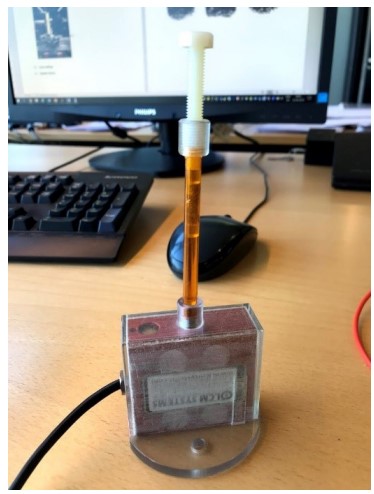Imaging the compression of stone wool fibres

Challenge
To analyse the microstructure of stone wool during compression using X-ray CT, an in situ compression cell was built. A cylindrical piece of stone wool was placed in a tube and compressed using a screw, which during tightening transfered the load to the sample. The force on the sample was recorded by a compression cell. By imaging the full sample and its length, the strain could be calculated. In order to study the microstructure, higher resolved images of a smaller part of the sample were recorded and image analysis was applied to obtain statistical information about the fibres.
Collaboration
The compression cell was developed in collaboration between the 3D Imaging Centre at DTU and ROCKWOOL, who also provided two samples. The X-ray CT measurements were performed in house using a ZEISS Versa 410, and subsequently analysed. This collaboration was part of the LINX project in which researchers at leading Danish universities collaborate with scientists in industry to solve industry relevant problems using advanced neutron and X-ray techniques.
Results
When the stone wool was in its original state or only slightly compressed, hardly any microscopic changes could be observed. Both the fibre orientations and the fibre length distributions did not change significantly, indicating that neither a breakage of fibres, nor a signigicant rearrangement take place. However, when a high degree of compression was applied, the curvature of the fibres changed, as shown on the left. When the load was released, the curvature returned to its original state. This finding indicates that a reversible bending of fibres is the predominant reaction of the fibres to compression.
Perspectives
During the transport of stone wool products, they are placed in layers, which might cause compression in the lower layers. Knowing how much a product may be compressed without causing irreversible microstructural changes, therefore helps ROCKWOOL in optimising the transport processes such that the products can keep their properties.

